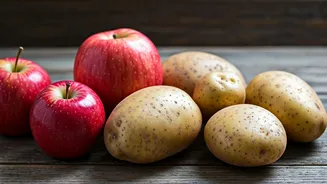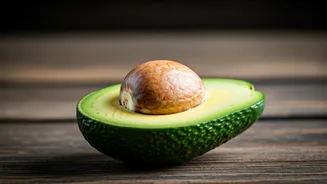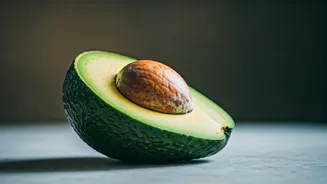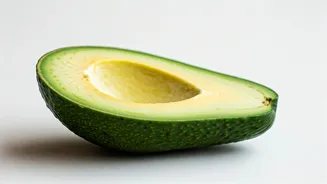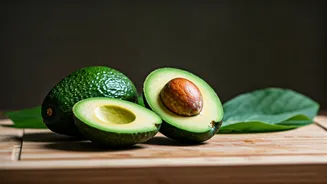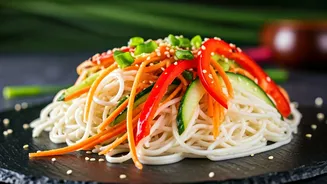Skin's Visual Clues
The avocado's skin offers the first clues to its ripeness. Look for a color change, which is a primary indicator. The hue varies by variety, but generally,
a dark green or even a purplish-black color signifies ripeness, especially in Hass avocados. However, it's not a universal rule. For example, some varieties remain green even when ripe. Also, observe the skin's texture; it should be somewhat bumpy. Avoid avocados with deep dents or bruises, which might indicate damage beneath the surface. These visual inspections help narrow down your choices and avoid disappointments.
The Gentle Squeeze
Beyond visual inspection, a light squeeze is crucial for determining ripeness. Gently press the avocado's skin with your palm. A ripe avocado should yield to gentle pressure, but not be overly soft. If it's rock-hard, it needs more time to ripen. If it feels mushy, it is likely overripe. The feel should be consistent across the entire fruit. Avoid buying avocados that have areas that are softer than others. This test gives a better understanding of the fruit's interior and is often a more reliable indicator than color alone, especially when dealing with unfamiliar varieties.
Stem's Insightful Role
The stem area, where the avocado was connected to the tree, is a small but powerful indicator of ripeness. Gently remove the stem cap. Underneath, a green color indicates the avocado is perfect. If it's brown, the fruit is likely overripe or has some bruising. If the stem is difficult to remove, or if the fruit underneath is hard to see, it usually means it’s not yet ripe. By checking the stem, you’re essentially peeking inside the fruit without cutting it open. This is one of the most accurate methods to gauge ripeness.
Varietal Considerations
Recognizing that different avocado varieties ripen differently is key. The Hass avocado, known for its dark, bumpy skin, is perhaps the most well-known. Its color changes and the gentle squeeze test are particularly relevant. However, other varieties, such as Fuerte or Bacon, often stay green when ripe. For these, focus on the squeeze test to evaluate ripeness. It's useful to learn the specific characteristics of the avocados available in your market to better determine when they are ready to eat. This approach means you are well-informed as you shop for avocados.
Ripening at Home
If you buy an avocado that isn't quite ripe, don't worry. You can speed up the process at home. Place the avocado in a paper bag with a banana or an apple. These fruits emit ethylene gas, which hastens ripening. Check the avocado daily by gently squeezing it. Once it yields to pressure, it is ready to eat. Alternatively, you can store unripe avocados at room temperature. Once ripe, you can store them in the refrigerator to slow down the ripening process for a few days. This way, you can time your avocado enjoyment to your culinary plans.



